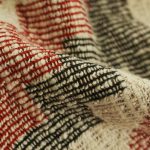I choose wool for clothing as it offers breathability, moisture-wicking, and superb insulation. It suits various climates and has health benefits like aiding sleep and skin care. The material's natural properties provide incredible comfort and practicality. Wool's unique features make it a staple in clothing choice due to its versatility and durability. If you're curious, there's more to uncover about why wool is a favorite for many clothing items.
Table of Contents
Key Takeaways
- Wool is breathable, moisture-wicking, static-resistant, and eco-friendly, making it ideal for all-weather protection.
- Its insulation properties, temperature regulation, and moisture-wicking abilities offer comfort in various climates.
- Merino wool is soft, strong, and durable, with minimal pilling and a luxurious feel against the skin.
- Wool is flame-resistant, self-cleansing, and reduces the need for frequent washing, making it a safer and low-maintenance choice.
- Wool is sustainable, biodegradable, UV-resistant, and supports sustainable fashion practices, making it an environmentally friendly option.
Natural Properties of Wool
Why is wool considered a valuable material for clothing?
Merino wool, known for its exceptional quality, possesses unique properties that make it highly sought after in the fashion industry. The properties of wool, such as breathability and moisture-wicking capabilities, contribute to its popularity.
Wool reacts to changes in body temperature, making it an ideal choice for all-weather protection. Its static-resistant nature and coiled fibre structure result in garments that are easy to clean and resistant to wrinkles.
Moreover, wool isn't only eco-friendly and biodegradable but also has carbon storage capabilities, making it a sustainable choice. Research has shown that wearing wool can offer health benefits, including promoting better sleep and being suitable for individuals with skin conditions.
These natural properties of wool highlight why it's valued in the clothing industry and preferred by many for its comfort, durability, and versatility.
Insulation and Temperature Regulation
Wool's insulation properties are remarkable, trapping air within its fibers to provide warmth.
This natural material also excels at regulating body temperature by absorbing and releasing moisture.
The crimp in wool fibers creates air pockets that act as a built-in thermostat, ensuring comfort in various climates.
Natural Insulation Properties
Utilizing its natural insulation properties, wool effectively regulates body temperature by trapping air within its fibers. The crimp in wool fibers creates tiny air pockets that provide excellent thermal insulation, keeping the wearer warm in cold weather and cool in warm conditions. Wool can absorb moisture up to 30% of its weight without feeling damp, which further enhances its ability to regulate body temperature.
This unique feature makes wool a popular choice for clothing in various climates and seasons. Whether it's winter or summer, wool's insulation properties work to maintain a comfortable and consistent body temperature, making it a versatile and practical option for everyday wear.
Regulates Body Temperature
Regulating body temperature efficiently, wool traps air within its fibers to provide insulation. The unique crimp in wool fibers creates pockets that trap air, offering excellent thermal regulation.
Wool fibers can absorb moisture, making it ideal for maintaining a comfortable body temperature in various climates. Merino wool, known for its fine fibers, enhances this property, ensuring effective temperature control. This natural fiber adjusts to the body's needs, preventing overheating or feeling too cold.
Wool's ability to regulate temperature makes it a versatile choice for clothing, keeping wearers comfortable and dry in diverse weather conditions. With its exceptional insulating properties, wool stands out as a top choice for garments that prioritize both warmth and breathability.
Moisture-Wicking Abilities of Wool
With its natural moisture-wicking properties, wool effectively absorbs and evaporates moisture from the skin, keeping the wearer dry and comfortable. The structure of wool fibers allows them to pull moisture away from the body, preventing that clammy feeling often experienced with synthetic materials. Wool can absorb up to 30% of its weight in moisture without feeling damp, making it an excellent choice for active wear and outdoor clothing. This ability to manage moisture also aids in regulating body temperature, as wool actively works to keep the wearer dry and comfortable. The breathability of wool fabric further enhances its moisture-wicking capabilities, making it a preferred option for performance clothing.
| Moisture-Wicking Abilities of Wool | ||
|---|---|---|
| Absorbs and evaporates moisture | Prevents clammy feeling | Manages body temperature |
Softness and Strength of Merino Wool
Merino wool stands out for its remarkable softness, owing to its fine fiber diameter of 17.5-18.5 microns. This low micron value not only enhances comfort but also minimizes pilling, ensuring a smooth feel against the skin.
Additionally, Merino wool boasts exceptional strength, making it a durable and long-lasting choice for various clothing items.
Merino Wool Texture
Boasting exceptional softness and strength, Merino wool stands out as a top choice for clothing due to its luxurious texture and durability. Merino sheep produce wool fibers that are highly sought after for their premium quality.
Here are three key points about the texture of Merino wool:
- Comfortable Feel: Merino wool is known for its exceptional softness, making it a comfortable option to wear directly against the skin.
- Durability: The wool from Merino sheep is highly durable and strong, ensuring that clothing items made from it have long-lasting quality.
- Luxurious Texture: With a low micron value of 17.5-18.5, Merino wool fibers have a luxurious texture and minimal pilling, providing a superior feel in garments.
Merino wool truly offers a luxurious experience with its softness and strength.
Durability of Merino
Merino wool's exceptional durability, in addition to its softness and strength, solidifies its reputation as a premium choice for long-lasting clothing items.
Despite its fine wool fiber diameter of 17.5-18.5 microns, Merino wool is surprisingly robust and resilient.
This durability is a result of the unique structure of the wool fibers, which can bend and flex without losing shape or integrity.
Unlike other types of wool, Merino wool exhibits minimal pilling, ensuring that garments retain a smooth and pristine appearance over time.
The combination of softness and strength in Merino wool makes it a preferred choice for those seeking both comfort and longevity in their clothing.
Its ability to withstand wear and tear while remaining soft against the skin sets it apart as a top-quality material.
Softness and Strength
Renowned for its fine fiber diameter and exceptional qualities, Merino wool offers a unique combination of softness and strength that sets it apart in the domain of clothing materials.
- Merino wool's fine fiber diameter of 17.5-18.5 microns contributes to its exceptional softness, making it a sought-after choice for luxurious wool fabric.
- Despite its soft feel, Merino wool is incredibly strong and durable, ensuring long-lasting wear in various clothing applications.
- The minimal pilling of low micron Merino wool fibers enhances the fabric's smoothness, maintaining its quality over time.
Flame Resistance and Self-Cleansing Properties
Utilizing its high protein content, wool naturally resists flames and possesses self-cleansing properties that reduce the need for frequent washing. This natural protein fiber is inherently flame-resistant, making it a safer option for clothing compared to synthetic materials. Additionally, wool's self-cleansing properties are remarkable; its structure prevents bacteria growth and odors, effectively repelling dirt and grime. This unique feature not only reduces the frequency of washing but also helps maintain the fabric's freshness and hygiene over time. As a result, wool becomes a low-maintenance fabric, perfect for daily wear. The combination of flame resistance and self-cleansing properties makes wool an excellent choice for individuals seeking both safety and convenience in their clothing options.
| Flame Resistance | Self-Cleansing Properties |
|---|---|
| Naturally resistant to flames | Repels dirt and odors |
| Safer choice for clothing | Reduces the need for frequent washing |
| High protein content contributes to its flame resistance | Unique structure prevents bacteria growth |
Sustainable and Long-Lasting Clothing Option
Being a sustainable and long-lasting clothing option, wool offers numerous benefits for both the environment and consumers.
- Wool is a sustainable clothing option due to its renewable nature, sourced from sheep that produce a new fleece annually.
- Wool garments have a long lifespan, reducing the need for frequent replacements and contributing to sustainable fashion practices.
- Wool is biodegradable, decomposing naturally and releasing valuable nutrients back into the earth.
Choosing wool for clothing not only supports sustainable practices but also provides consumers with durable and environmentally friendly options.
The biodegradability of wool guarantees that once a garment reaches the end of its life cycle, it can naturally decompose, unlike synthetic materials that contribute to landfill waste. This characteristic makes wool a desirable choice for those seeking clothing options that align with eco-conscious values.
Uv-Resistance and Biodegradability of Wool
Wool's natural UV-resistance and biodegradability make it a sustainable and eco-friendly choice for clothing materials. The inherent UV protection in wool fibers helps shield the skin from harmful sun rays, making it an excellent option for outdoor wear.
Additionally, wool is biodegradable, meaning it can easily decompose in the environment without causing pollution. This quality sets wool apart as a sustainable material, as its ability to break down naturally reduces waste and lessens its environmental impact.
Frequently Asked Questions
What Are 3 Advantages of Wool Clothing?
Three advantages of wool clothing include breathability for moisture control, natural odour resistance, and wrinkle resistance due to its unique fibre structure. Wool is a sustainable choice, static-resistant, and easy to care for.
What Is the Point of Wool?
The point of wool lies in its exceptional properties – breathability, moisture-wicking, and temperature regulation. These make it a top choice for clothing. Its renewable nature, resistance to wrinkles, stains, and static add to its appeal.
Why Is It Better to Wear Wool Than Cotton?
Wool is superior to cotton for clothing because of its breathability, moisture regulation, and insulation. It reacts to body temperature changes, keeping me warm and dry. Plus, it's naturally odor-resistant, easy to care for, and durable.
What Is the Speciality of Wool Fabric?
Wool fabric's specialty lies in its natural breathability, moisture absorption, and temperature regulation. It's renewable, static-resistant, wrinkle-resistant, and biodegradable. Versatile for all seasons, wool provides comfort, warmth, and durability. Its eco-friendly properties make it exceptional.
- How Does Ring Spun Cotton Affect Garment Fit and Shape Retention? - August 13, 2024
- What Are the Challenges in Producing Ring Spun Cotton? - August 13, 2024
- Is Ring Spun Cotton Suitable for Plus-Size Clothing? - August 13, 2024






